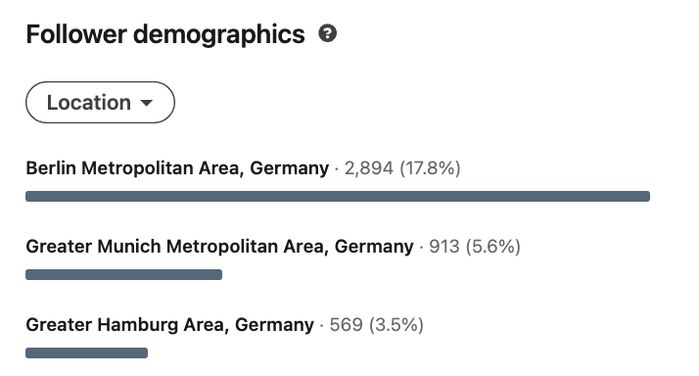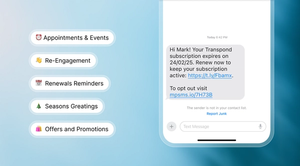Everyone’s fighting for attention on LinkedIn – your competitors, your boss, and probably your previous boss, too. It’s not enough to share content; you need a real plan to stand out. Visibility on LinkedIn is a battleground, and it’s more crowded than ever. Knowing when your audience is online and ready to engage with you is a real challenge.
You can write the sharpest post in your industry, but if it lands when no one’s looking, it disappears fast. Timing isn’t everything, but it does play a real role in how visible you are.
With so much conflicting advice on the “best time to post,” it’s hard to know what really works – or if it even matters. Here’s how to cut through the noise and build a posting schedule that works for you.
When to post on LinkedIn?
You’re not the only one asking this question. Plenty of brands, agencies, and social media experts have spent years trying to crack LinkedIn’s timing code.
The results are always varied, and the only real constant is that the algorithm never sits still for long. Here’s what some of the latest research says:
- SproutSocial: The best time to post on LinkedIn is from 10 a.m. to 1 p.m. on Tuesdays, Wednesdays, and Thursdays. The second best is 10 a.m. Monday and Friday, 9 a.m. Thursday, 9 a.m. Saturday, broad 7 a.m.-5 p.m. range on a Sunday.
- Hootsuite: Peak times are 4 a.m.- 6 a.m. on Tuesdays and Wednesdays. Other great choices include 5 a.m. Monday and Friday, 6 a.m. Thursday, late morning 10 a.m.-12 p.m. on weekends.
- CoSchedule: The top three hours to post LinkedIn content is: 12 p.m., 10 a.m., 1 a.m. (all times global). The best days for your posting strategy are Tuesday, Thursday, and Wednesday.
- LinkedIn: You'll achieve the highest results on weekdays, especially mid-morning (10-11 a.m.) and lunchtime (12-1 p.m.) Tuesday through Thursday. The most active day overall is Tuesday.
- Blogging Wizard: It’s best to post between 10 a.m. and 12 p.m. on weekdays for maximum engagement.

So, what does all this conflicting advice actually mean for your business? According to the research, the “best” times often fall between 4–6 a.m. and 10 a.m.–12 p.m. on Tuesdays, Wednesdays, and Thursdays. Sounds simple enough… until you look closer.
In reality, what works for one page may flop for another. Your results hinge on your unique audience, industry, content style, and even your goals for each post.
Why your best posting time can be completely different
Building your LinkedIn strategy on someone else’s research is risky because your audience isn’t theirs. What works for a global SaaS company might fall flat for a local consultant. The best time for you could be miles apart from the “industry average.”
Here’s what throws the numbers off:
Your audience may not match global averages
The problem with broad advice? Your audience might be nothing like the one in those studies. Your target group may be located in a different country or even spread across several continents.
Time zones only make things messier.
- If you work with a global audience, your 6 a.m. could span everything from early morning in London to the middle of the night in New York.
- Targeting clients on the West Coast of the US? Posting at 9 a.m. Eastern means your message hits their feed at 6 a.m. – when they’re still asleep.
- Or maybe your niche is in Australia, but your team schedules posts on Central European time – what looks like lunchtime for you could be well after work for them.
In short: the best time to post is the one that lines up with your actual audience’s daily routine, not the one that tops a global average.
Post engagement depends more on content than timing
You can hit the so-called “perfect” posting window, but if your update is bland, it’s still going to get ignored. Meanwhile, a genuinely valuable post can take off no matter when it’s posted, especially if people save, comment, or reshare it later. For example, you’d be surprised how often this happens over weekends, too. For many of those “best time” studies, Saturday and Sunday are dismissed as dead zones, but standout content often finds a second life when people finally have time to scroll without back-to-back meetings.
What actually grabs attention?
- A hook that stops the scroll (your opening line matters more than the clock)
- A clear point of view or insight, not recycled advice
- Visuals that stand out (images, videos, or documents catch the eye)
- A relatable story or real example – something that feels personal or specific
- A call to action that sparks conversation (inviting real responses, not just “likes”)
Remember - even the best posting window in the world can’t rescue a weak post.
LinkedIn platform features add more confusion
You can control when you hit “post,” but what happens next isn’t always up to you. A few things that throw off even the most careful timing. Your audience might reshare your post days after it goes live, or comments can trigger a new wave of visibility long after you’ve published.
All this means that the so-called “best time” isn’t as clear-cut as it seems. With so many moving parts, the only way to make sense of it is to pay attention to what’s actually happening on your own posts.
LinkedIn's algorithm is unpredictable
And if you’re still holding out hope for a clear formula, here’s another wrinkle: LinkedIn has even published a breakdown of how their algorithm works to sort viral content and weed out spam.

Timing doesn’t even play a significant role here – there’s also human review, spam filters, and “virality moderation.” Even if your timing is perfect, your post might still get held up, deprioritized, or quietly filtered before it ever sees a wide audience.
Combine that with the recent Business Insider revelation that LinkedIn is deliberately resurfacing older posts to “balance recency with relevance,” and it’s clear – the platform is in constant flux. The rules of the game keep changing, and no amount of timing tricks will guarantee results if the algorithm decides otherwise.
Everyone else wants to post in the "best" hours, too
Let’s say, for argument’s sake, there is one best time to post on LinkedIn. Word gets out, and suddenly every marketer, recruiter, and founder is scheduling their updates for that exact moment. Instead of increasing your reach, you’re now lost in a flood of competing posts, all fighting for the same bit of attention.
When everyone piles into the same posting window, your chances of standing out shrink. And if your content keeps getting buried, it’s a sign to break away from the herd and test different time slots – ones where your audience is still active but the competition is lighter.
Following the crowd rarely works. The only “best time” that matters is the one that works for your audience and your goals.
Not all posts have the same intent
Even if there were a universal “best time,” it wouldn’t apply to every kind of post. The right timing depends on what you’re trying to achieve. A few examples:
- If you’re building a personal brand or aiming for thought leadership, you might want to hit times when your peers are most active and ready to engage.
- If you’re nurturing existing leads or pushing a new offer, you’ll get better results by aligning with their local business hours.
- Recruiting? Early mornings or lunchtime might catch job seekers when they’re scrolling, even on mobile.
- Sometimes you just want to share something light – a meme or a team update – where timing matters less than simply being present.

And it’s not just intent. The format of your content plays a big role, too. Video, text, carousels, and polls all perform differently, sometimes regardless of when they go live.
How to find your own best time to post on LinkedIn
At this point, you might be ready to give up on the idea of a “best time” altogether. But there’s good news – your best time to post does exist. It just takes a bit of testing to uncover it.
Here’s a simple, step-by-step way to find out when your audience is actually listening:
Set a short test period
Start by posting at different times across the day for two to three weeks. This gives you enough data to spot real patterns, without letting too many other variables get in the way.
A few things that might influence your numbers during this window:
- You could pick up a batch of new followers after a popular post, which skews engagement upward for a few days.
- A major industry event or holiday might temporarily slow down LinkedIn activity in your niche.
- Maybe one of your posts gets a boost from a high-profile reshare, bringing in unusual visibility that isn’t tied to timing.
The goal is to collect enough consistent data to filter out these anomalies and focus on what’s really working.
Include weekend posts
We’ve already touched on this, but it’s worth repeating: weekends can surprise you. Schedule at least one post on both Saturday and Sunday in each time slot you’re testing. This helps you see if your community is active even outside the regular workweek.
For most B2B audiences, business hours during the week are usually the busiest. But if you’re only posting when everyone else does, you might miss out on a segment of your audience that prefers catching up on LinkedIn over the weekend.
Then, in your tracking, split your data by weekday and weekend. Does your Monday 10 a.m. post behave differently from your Saturday 10 a.m. post? Sometimes the most valuable conversations happen when there’s less noise.
Test both, and let the results lead you.
One thing to keep in mind: if you do post on weekends, be ready to engage. LinkedIn conversations don’t pause just because it’s Saturday. If your post picks up steam, you might find yourself replying to comments or DMs when you’d normally be offline. It’s all about what fits your work-life balance – and how responsive you want to be if engagement hits at an unexpected time.
Account for follower locations
Don’t just post based on your own schedule – always check where your audience is.

For example, if your analytics (like the chart above) show most followers are in Berlin, Munich, and Hamburg, make sure your posts go out on German time. If you’re scheduling from the UK, remember a 4 p.m. slot is already 5 p.m. in Berlin—possibly too late to catch people before they log off.
The key is to align your timing with your audience’s workday, not your own.
Define clear time blocks for posting
Don’t just post at random – choose four specific windows that reflect different parts of the day and different user habits. For example:
- Early morning before work (around 7 a.m.)
- Mid-morning (about 10 a.m.)
- Lunch break (between 12 and 1 p.m.)
- Late afternoon (around 5 p.m.)
If you have a global audience, add an evening slot to catch those in other time zones or who tend to scroll after hours.
These slots should also fit your own workflow. If mornings are quieter for you, use that time to craft and post updates live. If your days are packed, schedule your content in advance—and keep a backlog ready so you always have something to share.
Collect performance metrics twice
Check your post analytics twice for every update:
- First, 48 hours after posting, to catch the early spike in engagement
- Then again after seven days, to see how much traction your post picked up over time
Don’t just look at raw numbers. Track impressions, reactions, comments, shares, click-throughs, and any new followers. LinkedIn’s built-in analytics are a great starting point, but if you want a broader view, tools like Buffer or Hootsuite can help you spot trends over time.
For real insight, don’t just add up totals – calculate averages for each time slot. For example, measure reactions or comments per 1,000 impressions instead of just counting likes. This helps you see which windows deliver the most engaged audience, not just the biggest numbers.
With this approach, you’ll move past cookie-cutter advice and find the best times that actually work for your brand.

It also helps you spot patterns that aren’t always obvious day to day. For example, look at the profile viewers chart above: even when daily engagement seems steady, there are sudden spikes – maybe after a post goes viral or a key industry event. Then things settle again, but often at a new “normal” that’s higher or lower than before..
Refine your content beyond timing
Ultimately, timing only gets you so far. Strong content will break through, no matter when you post. A few ways to boost your odds:
- Respond to comments quickly – engagement in the first hour can push your post further in the feed.
- Re-share your best posts in a quieter slot a few weeks later to reach new people.
- Double down on quality: a compelling hook, clear insight, and a real point of view always outlast the latest posting trend.
Experiment with your schedule, but never compromise on content. That’s what consistently builds visibility – and results – over time.
Conclusion
There’s no single “best” time to post on LinkedIn – and that’s actually an advantage. It means you’re not stuck in someone else’s playbook. You have room to experiment, adjust, and find a rhythm that works for your audience. This freedom lets you stand out on your own terms – instead of battling for space in a crowded window.
When your content finally clicks and you start building new connections or leads, don’t let that momentum fizzle out. Capsule makes it easy to turn those LinkedIn interactions into real business opportunities. You can import your LinkedIn contacts directly into Capsule in just a few steps, keeping all your key relationships and opportunities organized in one place.
Here’s a quick guide if you want to see how it works.
Find your best time, make it count – and be ready to capture every connection that comes your way.




